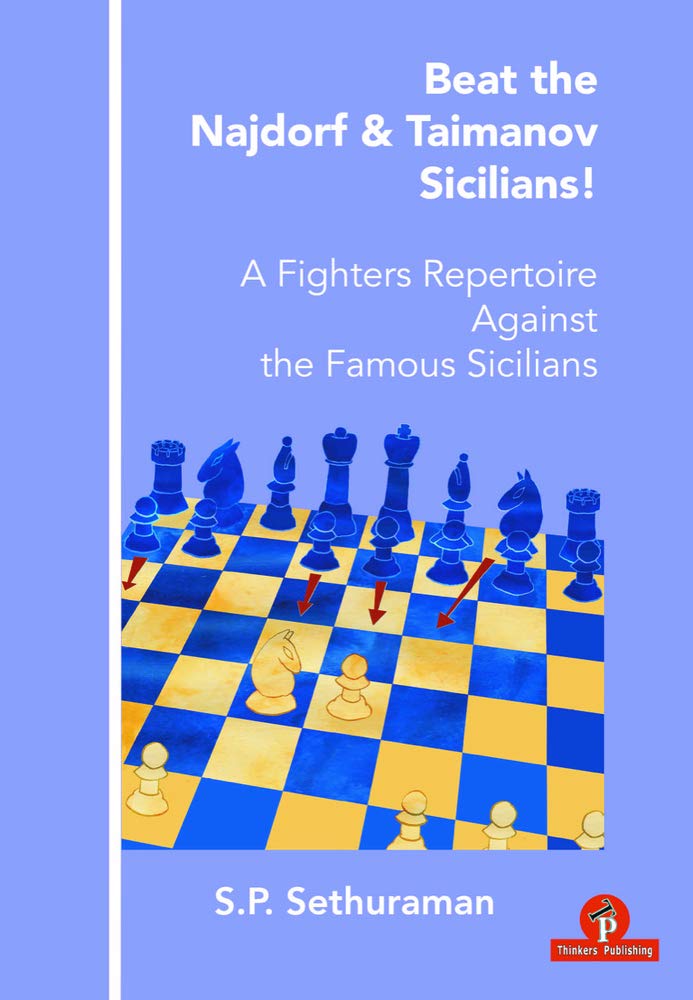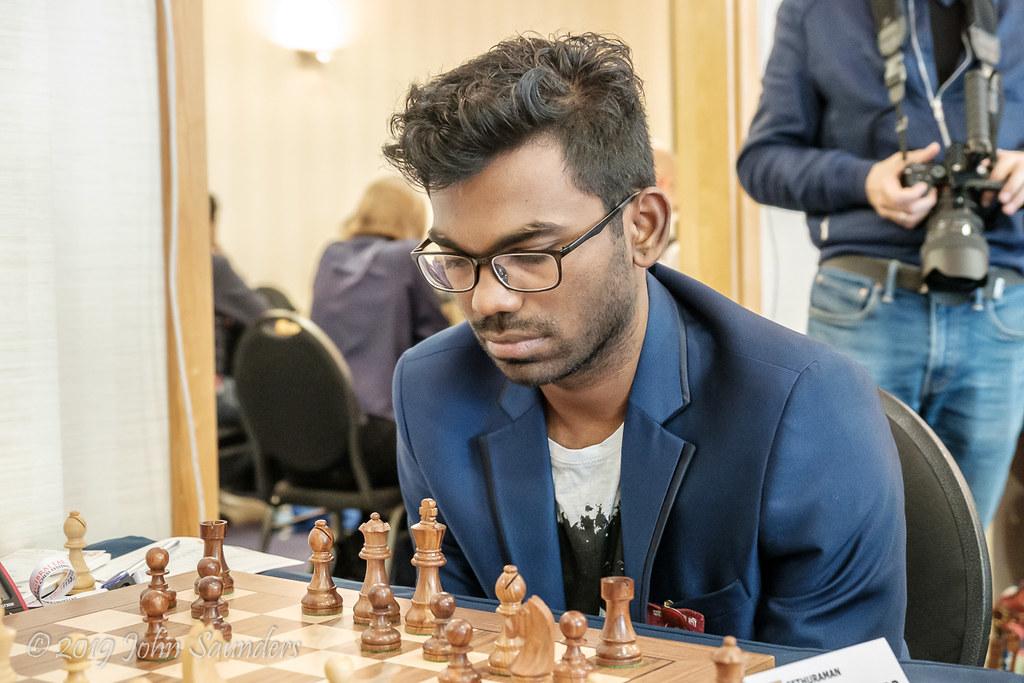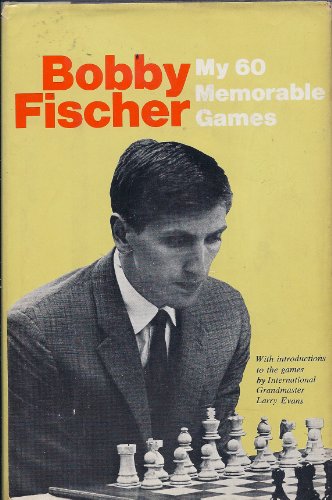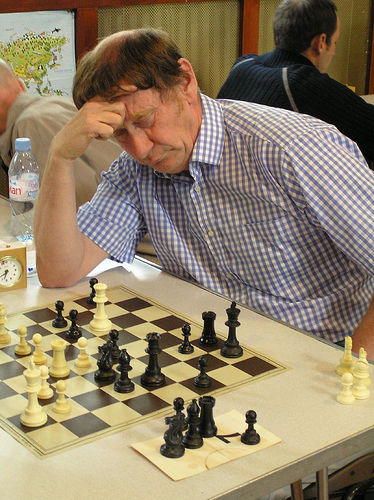
“Sethuraman Panayappan Sethuraman is an Indian born chess grandmaster. Among his many successes we remember him winning the national championship in 2014 and becoming Asian champion in 2016. For his country, he played in several team competitions achieving countless successes: Bronze Medal Chess Olympiad 2014, Gold Medal Asian Teams 2016, Gold Medal Asian Teams 2016 & Silver Medal Asian Teams 2018. He is currently one of the leading grandmasters of the new Indian chess generation and a very renowned opening specialist. This is his first book for Thinkers Publishing.”

From the publisher we have this brief blurb:
“The book you hold is the first work of GM Sethuraman and contains his efforts to find new paths and fresh perspectives on these two variations of these famous Sicilians. We hope you gain from information in this book as well as simply enjoy the games themselves.”
End of blurb…
The author is Indian Grandmaster S P Sethuraman who was born in 1993 and very much a child prodigy. In 2004 he won the under-12 Asian Championships and in 2009 the World under-16 Championship and in the same year he qualified for the Grandmaster title.
In his first book the authors starts-off by looking at the Sicilian Najdorf recommending that white should play the modest move 6.h3.
The earliest appearance for this move would appear to be in 1949 at the US Open played by Weaver Adams versus Max Pavey. 6.h3 was subsequently made popular in the 1960s by Bobby Fischer and features three times in his book My 60 Memorable Games in games 35, 40 and 43.

In 1962 Fischer used 6.h3 to first beat Julio Bolbochan at Stockholm then Miguel Najdorf at the Varna Olympiad and finally Samuel Reshevsky in the 1962 – 63 US championship.
It is worthy of note that the author has played 6.h3 himself on eleven occasions scoring an impressive 77.3%. Here is a swift example:
Amongst current elite players 6.h3 has been chosen by Hikaru Nakamura. Following 6.h3 White will put his dark square Bishop on e3 and castle Queen side. He also intends to play g4 and then g5.
Chapter 1 looks first at 6…Nc6 which was the move Bolbochan played and after 7.g4 h6 8.Be3 e6 9.f4! White intends to play Bg2, the most normal square for the bishop in this line, then Qf3 and OOO.
White will then start pushing black back with g5 when he will be very much on the offensive. Possibly a better try for black is to play 7…g6 where the GM admits that if black knows his theory then he should be able to achieve equality. 7…Qb6 (the most popular database move) is also considered but White will play Nb3 and at a later stage Be3 attacking the Queen.
In Fischer v Najdorf the move 6…b5 was played and the author suggests responding 7.a4 answering b4 with 8.Nd5 with best play White appears to retain an advantage.
7.Nd5 was played in the Fischer v Najdorf game and that also seems promising for White. Fischer reveals that Reshevsky’s choice of 6…g6, treating the game as if it were a type of dragon position, was a sensible one and since White generally follows up with Be3, Qd2 and 000 the American GM seems to make a fair point. However, there are some differences with a conventional Yugoslav Attack as white has not yet played his Bishop to c4 and in some lines he will play Bg2 followed by f4.
In Chapter 3 6…e6 is examined. After 7 g4 d5 the somewhat surprising 8.Nde2! may shock players of the black pieces.
Black can instead try 7…h6, a natural reaction to g4, but if he intends to castle king side this can be a dangerous weakening move to play. In the so-called main line of 7…Be7 we have 8.g5 and White will carry out the standard plan of Be3, Qd2, 000 and, at the right time, h4 when his attack seems more dangerous than blacks.
Interestingly, the favourite / thematic Najdorf move of 6…e5 is not as effective as it is against the English attack it would appear when
White plays Nb3, Be3 and then f4!
In summary, since 6.h3 is less often played than either 6.Be3 or 6.Bg5 it could well be a wise choice and therefore a good repertoire suggestion.
The second part of this book deals with the Sicilian Taimanov variation.
By far the most popular fifth move for white these days is 5.Nc3 which is in preference to Fischer’s 5.Nb5.
Again, the author practices what he preaches with 19 games and a hit rate of 68.4%. In this encounter from 2019 his hapless opponent tries the unpopular and offbeat 5…Be7 and gets things very wrong indeed:
After the more main stream 5…Qc7 6.Be3 a6 the author recommends 7.Qf3
and both Black responses of 7…Bb4 and 7…Nge7 are examined in detail. I was somewhat surprised that after 7…Bb4 8.000 is recommend daring black to play the “ruinous” 8…Bxc3 as White’s dark squared bishop tends to be very strong in these structures.
Black can also try 7…b5 but 8.Qg3 led to a pleasant end game for White in Motylev v Aravindh 2017 and the actual game result was not the fault of the opening:
If White prefers then 8.Nxc6 is also quite a promising line.
Black moves such as 7…Bd6 and the hedgehog-like 7…d6 where White will often respond to black castling King side with launching his g and h pawn up the board. Finally the knight moves 7…Ne5 and 7…Nf6 are analysed.
In summary, this is a new book from a new author with a generous quantity of analysis given but unlike many modern opening books it is not centered around illustrative games. It will appeal to players who are confident in their abilities to learn and recall more analysis than their opponent.
Colin Lyne, Farnborough, Hampshire, 14th July, 2021

Book Details :
- Paperback : 240 pages
- Publisher: Thinkers Publishing; 1st edition (22 Sept. 2020)
- Language: English
- ISBN-10: 9492510820
- ISBN-13: 978-9492510822
- Product Dimensions: 16.51 x 1.52 x 22.86 cm
Official web site of Thinkers Publishing

